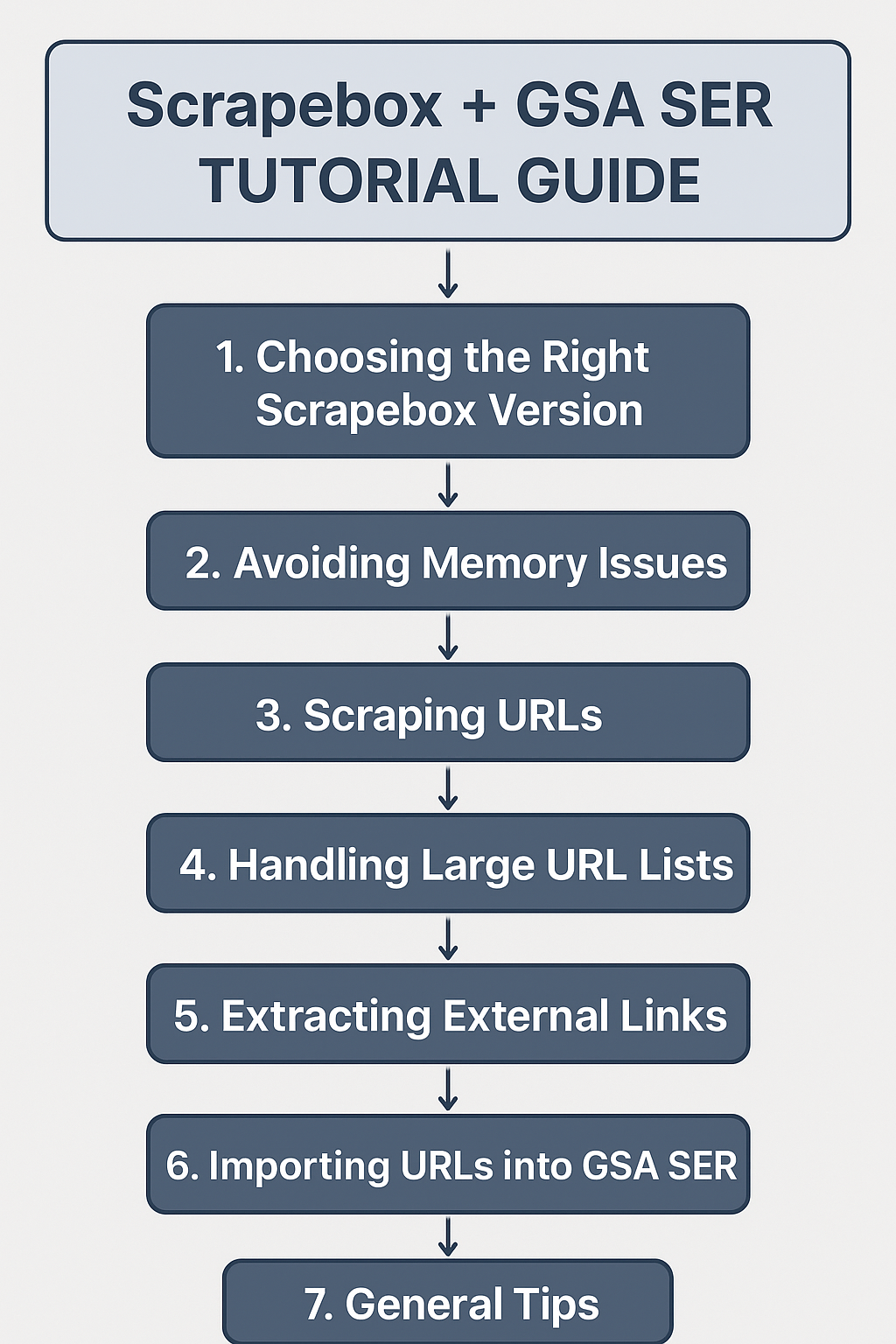Scrapebox + GSA SER Tutorial Guide

This guide is for GSA users who want to efficiently harvest URLs with Scrapebox and use them in GSA SER, while avoiding crashes and optimizing link-building campaigns.
1. Choosing the Right Scrapebox Version
-
Use Scrapebox v2 or the latest stable version.
-
Older versions may crash with large datasets.
2. Avoiding Memory Issues
-
Do not load all your keywords and footprints at once.
-
Experiment with smaller batches to find your “sweet spot”:
-
Example: 100–1,000 keywords at a time.
-
Use partial lists of footprints, then rotate them.
-
-
If Scrapebox crashes:
-
Reduce the number of keywords/footprints.
-
Increase virtual memory on your PC if possible.
-
Consider splitting scraping across multiple sessions.
-
3. Scraping URLs
-
Input your keywords and footprints.
-
Start scraping.
-
Do not worry about trimming URLs:
-
GSA SER can handle full URLs.
-
Trimming is optional; it’s fine to import the URLs as-is.
-
4. Handling Large URL Lists
-
If you have a huge list (e.g., 50k–100k keywords):
-
Scrap in batches, not all at once.
-
Remove duplicate domains and URLs after scraping to reduce load.
-
Example:
-
Scraped 100 keywords → 30k unique domains → imported into GSA SER → LpM jumped from 15 to 71.
5. Extracting External Links
-
Use Scrapebox’s Link Extractor or tools like Moz Backlink Checker.
-
Steps:
-
Import verified URLs (e.g., 50k verified URLs).
-
Split them into smaller batches (optional).
-
Extract external links → you may end up with millions of new URLs.
-
Optionally, use
"URL in quotes"Google search to find even more links.
-
Note: Filtering is optional:
-
You can filter by:
-
Outbound links count
-
Presence of malware/phishing
-
PR (PageRank)
-
Keywords or bad words in content
-
-
But filtering takes too much time and may not be worth it. Just import the links directly into GSA SER.
6. Importing URLs into GSA SER
-
Direct import works fine:
-
You don’t need to break the URL list into smaller chunks.
-
GSA SER will verify and post to usable links automatically.
-
-
Tier 2 links: if they aren’t posting:
-
Keep scraping new links.
-
Keep posting consistently.
-
Results improve with volume over time.
-
7. General Tips
-
Numbers game: Keep scraping and posting continuously.
-
Use multiple servers or instances if possible to run 24/7.
-
Rotate keyword/footprint combinations to avoid duplicate results.
-
Don’t stress over trimming or filtering too much—focus on volume + consistency.
Quick Workflow Example
-
Scrape 100–1,000 keywords with a set of footprints → 30k unique URLs.
-
Import into GSA SER → post and verify.
-
Extract external links from verified URLs → 4M+ URLs.
-
Import those into GSA SER → post directly.
-
Optionally, use URLs in quotes to find even more links.
-
Repeat scraping with new keywords/footprints → increase LpM over time.
I’ve been away from using GSA products for over 3 years, but I’m slowly making my return now. I also wanted to share the process I used in the past to scrape and build verified lists.
This is the exact method I followed back then, and I’m planning to refine it as I get back into things. Since English isn’t my first language, I used AI to help polish this post a bit so it’s easier to read.

Comments